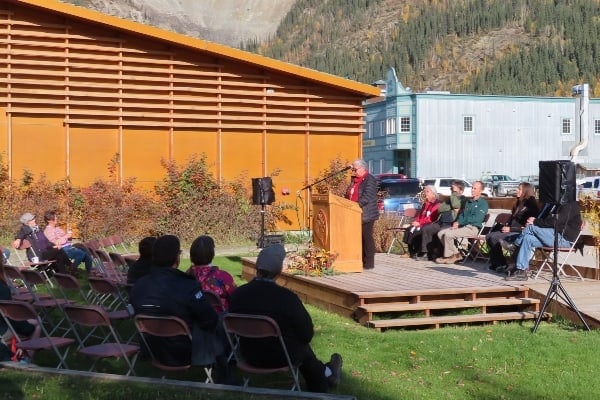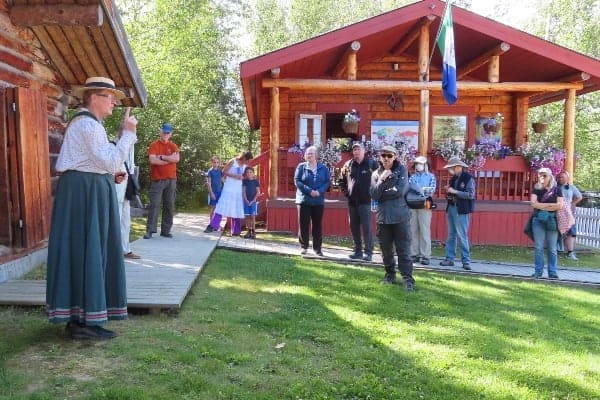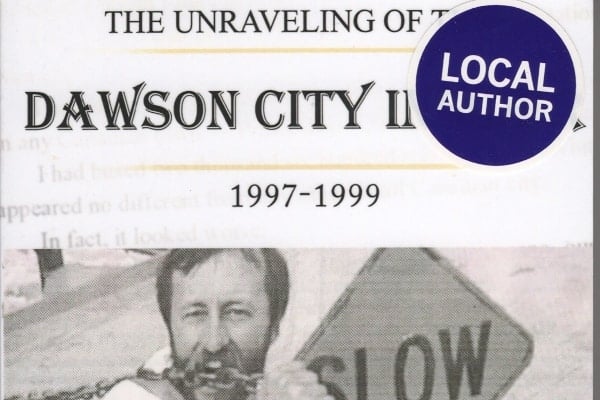As the calendar moves inexorably towards Canada Day, with all the busyness of the holiday combined with the Yukon Goldpanning Championships, which fill up much of the afternoon, I find myself thinking back to how close we came to celebrating a different national holiday instead.
In my last column, I mentioned how Luella Day (or Diamond Lil) had petitioned the President and Congress of the United States to take pity on the poor American miners who were being oppressed under British rule.
Her account may have been largely fictional, but the bit about there being lots of American citizens here sure wasn’t.
Of the 30,000 souls who had made it to Dawson and the Klondike by July of 1898, the vast majority would have been Americans fleeing the economic depression that made our current tough times look like prosperity.
As hard done by as they had been at home, most of them were still faithful to the red, white and blue and could see no reason not to celebrate Independence Day on the Fourth of July.
These days, some American visitors, who want both holidays, visit us for Canada Day and then elect to scurry on over to Eagle, Alaska, for another small town celebration.
I haven’t been to Eagle for their parade, but ours takes about 15 minutes to pass any given point on the route, so theirs has to be shorter.
In 1898, however, Dawson was the Paris (or San Francisco) of the North, and was bound to have the biggest parade within several thousand miles. Any celebration worth having was going to be had right here.
For Canadians, that had to be Dominion Day, which didn’t get changed to Canada Day until April 17, 1982, as part of the patriation of the Canadian constitution and the passing of our Charter of Rights and Freedoms, an event which our current federal government is steadfastly ignoring the 30th anniversary of this very year.
As usual, rumours played a big part in setting the mood. In Klondike, Pierre Berton records that “tension had been building in the community because of rumours that no American holiday could be celebrated on British soil…”
This was unacceptable to thousands who had not even realized they were crossing a border until they met the Northwest Mounted Police at the top of the Chilkoot Pass.
Berton records that the “Mounted Police tactfully decreed that both Dominion Day and Independence Day would be marked by common festivities.”
Since loud noises were required, rifle shots rang out all over town just past midnight on the Fourth as the four days of merry making reached a climax.
“But this was not enough,” Berton writes. “Men scurried about procuring anvils, on which mounds of blasting powder were placed, and upon these other anvils were placed, so that a piece of red-hot iron run between them touched off a sound like a cannon’s roar.”
Apparently this so terrified the dogs in town that some 400 of them fled through the dense crowds, leaped into the river and hightailed it for the bush on the far side as fast as they could go.
Berton records that three-quarters of them eventually returned, but “about one hundred preferred to remain wild in the forest, where they ran like wolves, never to return to the crazy community on the banks of the Klondike.”
After 32 years teaching in rural Yukon schools, Dan Davidson retired from that profession but continues writing about life in Dawson City.




